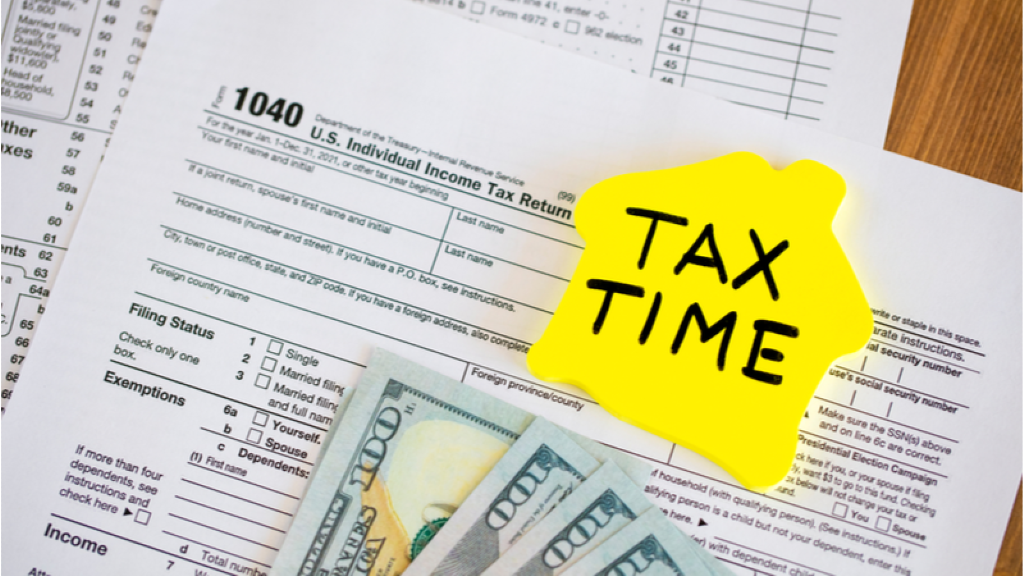Most Common Tax Forms

- Tax forms come in categories. So if you know the category, you have a general idea of what the document is used for.
- The 1040 form is the most common form that individuals file come tax season.
- All other forms individuals receive at tax time help you fill out the 1040 form.
The Internal Revenue Service (IRS) expects you to stay on top of your taxes each year. However, it is pretty easy to get overwhelmed. You don’t know what to report, where to report it, or even if it needs to be reported.
To make it more confusing, every tax form is a combination of letters and numbers that are not acronyms and seem entirely nonsensical. But, with some insight, these various tax forms will start to make sense. It is essential to consult a tax professional or CPA if you are still unsure about your tax forms.
Understanding W Forms From Employers
All W forms indicate a relationship between a paid individual and a company. If you are giving a W form to or receiving one from a company, that means you’ve made money from that company. Each W form means something different.
W2
You probably know what a W2 is, or at least you probably get one every year. But why do you get one? An employer is required to issue a W2 for any employee that was paid more than $600 in a given year from whom “Income, Social Security, or Medicare tax was withheld” or could have been withheld.
W4 (W4P)
Assuming you’re like me, you probably stumbled through your W4 when you started your job. This is the form where you claim dependents, among other things, to determine how much should be withheld in taxes.
The P version of this form does the same, but for “periodic pension, annuity (including commercial annuities), profit-sharing and stock bonus plan, or IRA payments.”
W9
A W9 is filled out and given to anybody who will pay you in one of the following ways:
- Income paid to you throughout the year.
- Real estate transactions during the year.
- Any mortgage interest you paid.
- Any acquisition or abandonment of secured property.
- Any cancellation of debt.
- Any contributions you made to an IRA.
The W9 form allows them to report this information to the IRS correctly.

Image Credit: Chaay_Tee / Shutterstock.com
Other W Forms
Typically, you will see a W-2, W-4, or W-9. These numbers are not arbitrary. There are W1, 3, 5-8, 10, and 11 forms. Most people never encounter them.
1040 Forms: Reporting your income
The 1040 class of forms are used to report income to the IRS. So if you made money, you would fill this out when tax season rolls around. It can be simple or very complex to understand, depending on your income situation.
The main form is the 1040 form. That is what you will fill out if you make income in general. When you’re filing your taxes, this is the form you are filling out, and everything else is just an appendage to it.
1040 SR
The SR stands for senior, so this is to be filled out by people over 65. It makes reporting Social Security Income and other retirement benefits easier.
1040 EZ and the 1040 A
These are obsolete forms that no longer exist. Make sure to fill out the correct 1040 form when filing your taxes.
1095 Forms: Reporting health care
1095 forms are issued to you to prove that you have health insurance per the Affordable Care Act.
Form A and C
There are two common 1095 forms, form A and C. Form A is issued to you when you have insurance through the government marketplace. Form C is given to you when you have insurance through an employer.
1099 Form: Other income received
While the 1040 form reports income to the IRS, the 1099 form reports income to you from various non-employer sources. So it is like a W2, but not from an employer.
NEC Form
This is to record payments made to an independent contractor. So if you work in the gig economy and make more than $600 from one source, your employer will send you a 1099-NEC.
The 1099 is just a tool to help you know how much income you’ve made and need to report. Your 1099 is not attached to your tax filing.
Miscellaneous (Misc.)
The 1099-Misc is any income that doesn’t fall into the other 1099 categories. Payments are recorded and sent to you in a 1099-Misc. This form is used when you earn more than $600 on the following items.
- Rents
- Prizes and awards
- Other income payments
- Medical and health care payments
- Crop insurance proceeds
- Cash payments for fish (or other aquatic life) you purchase from anyone engaged in the trade or business of catching fish.
- Generally, the cash is paid from a notional principal contract to an individual, partnership, or estate.
- Payments to an attorney
- Any fishing boat proceeds

Image Credit: Postmodern Studio / Shutterstock.com
G, R, Div, Int, and K Forms
The G form is issued when you’ve made money from a government organization. Think G as in government. The R form is for distributions from pensions or annuities. Think R as in retirement.
The Div form is for dividends or distributions paid on investments. The Int form reports interest, like from a bank account. Finally, the K form is issued from online payment providers when you make money online using them.
1098 Form: Reporting interest paid
The 1098 is the opposite of the 1099 in a way. With the 1099 someone is reporting to you that they’ve paid you money; with a 1098 someone is reporting to you that you’ve paid them money.
1098 Original
The original 1098 form is for interest paid on a mortgage. If you’ve paid more than $600 in interest, you’ll be issued a 1098 form. This is only useful if you are itemizing your taxes, which isn’t very common. But it’s still worth sending it to your tax professional or using it to complete that section of your taxes and holding on to it.
E & T Forms
The 1098 E form is for interest over $600 paid for student loans. Once again, this is mostly for itemizing your taxes but sending it to your tax professional or using it to complete that section of your taxes and holding on to it is a good idea.
The 1098 T form is the same as above but for tuition. Think E for education expenses and T for tuition to keep them straight.
Schedules: Reporting Profit and Losses
If you are completing a Schedule, you are listing money received or lost from various endeavors. Two of the most common schedules are C and K, but if you see a schedule on your taxes, remember you’re reporting money received or lost for whatever category it falls under.
C & K
Schedule C is a profit and loss for a business. This is where a business owner declares how much money they’ve made or lost during the year. If you’re not a business owner, you won’t have to worry about this section.
Schedule K has to do with gains and losses of investments or assets. If you’ve made gains, you’ll be taxed on them, and if you’ve had losses, that will reduce your tax liability.
Making Sense of All Tax Forms
By understanding the categories that tax forms fall in, you can be more informed as you’re dealing with your taxes without looking up every detail of every form.

Image Credit: Monkey Business Images / Shutterstock.com
Disclaimer: This is not tax advice. The information in this article is strictly for informational purposes. Although there are many resources listed within this article, always check the IRS website or your tax advisor to gain a clear understanding before filing your taxes.
How do you plan to file your taxes this year? Do you use a Robo-tax advisor, a local tax agent, or do you file your taxes on your own? Please share with us in the comment section below.
Main Image Credit: URem / Shutterstock.com